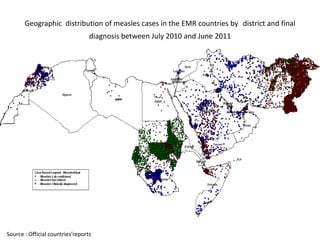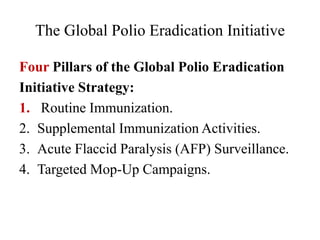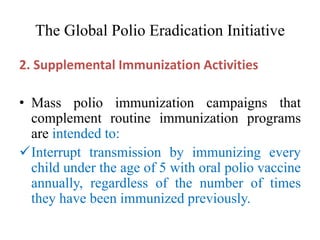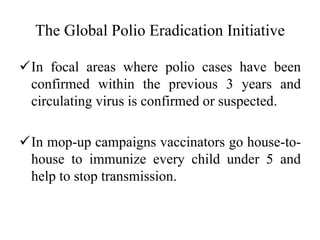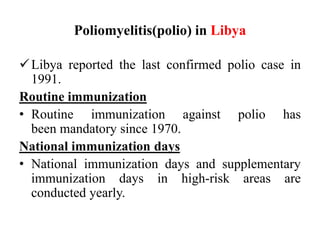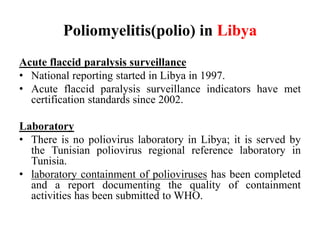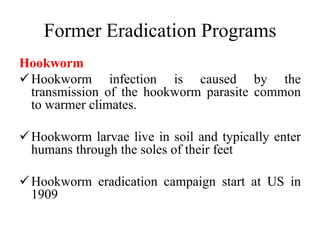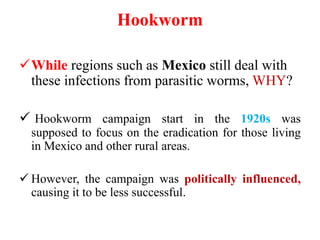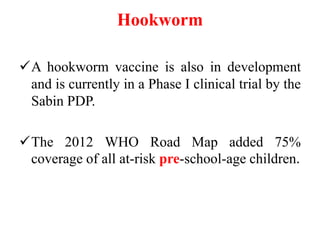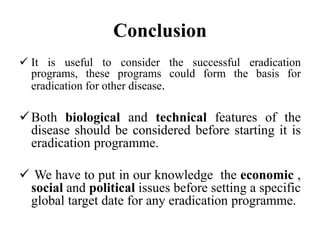The document provides an overview of disease eradication, focusing on definitions, criteria, and various programs. Successful cases include smallpox and rinderpest, while ongoing efforts target diseases like polio and measles. The content emphasizes the importance of biological, economic, and social factors in planning for disease eradication.
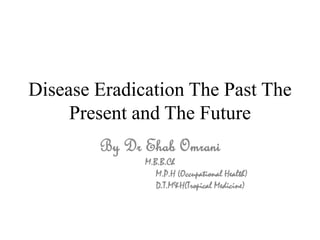










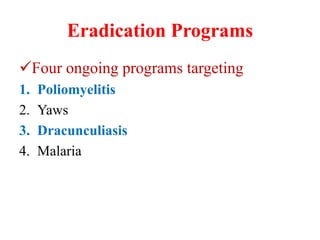

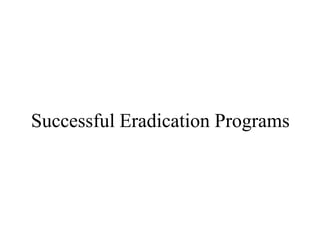
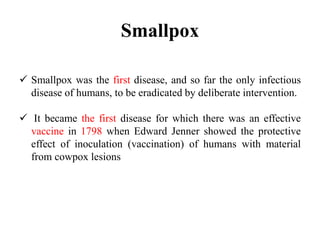






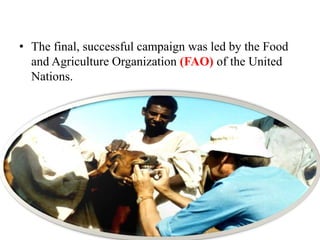






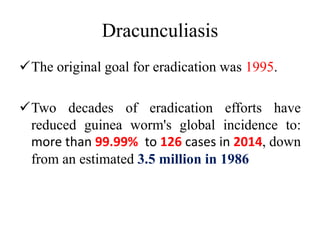




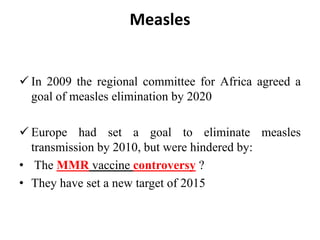
![Measles
The Americas set a goal in 1994 to eliminate measles
transmission by 2000, and successfully achieved
regional measles elimination in 2002.
As of February 2015, measles is no longer
eliminated in the US.
From January 1 to April 10, 2015, 159 people were
reported to have measles.
most of these cases [117 cases (74%)] are part of a large,
multi-state outbreak linked to an amusement park in California](https://image.slidesharecdn.com/1estinterviewdiseaseeradication-150430103558-conversion-gate01/85/Diseaese-Eradication-Past-Present-and-Future-35-320.jpg)


